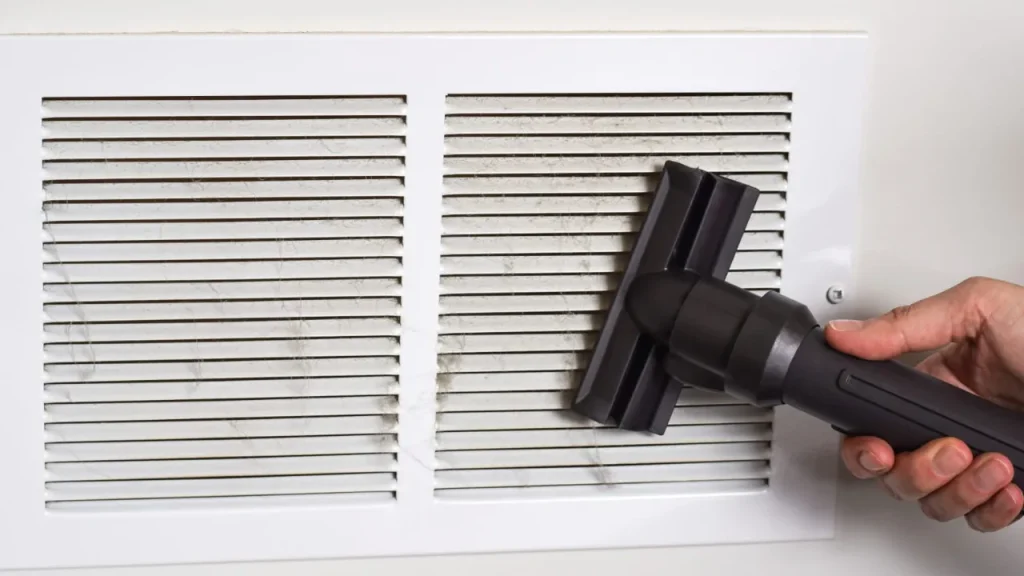Have you ever wondered what gear the pros use to get your ventilation spotless? It’s not just a shop vac! Professionals rely on specialized, powerful equipment to ensure all the dust and debris are removed safely from your home.1 This gear works together in a system. Each part has a very important job. Let’s pull back the curtain and look at the main pieces of a professional setup, starting with the heart of the operation.
The Core of a Professional Duct Cleaning System: Negative Air Machines & Vacuums
The most important piece of equipment is the negative pressure unit. Think of it as a massive, super-powered vacuum. Technicians connect this large vacuum to your home’s ventilation system. It pulls a powerful suction through all the vents. This ensures that when dirt is loosened, it travels directly out of your home and into a collection unit, not into your living space.
This setup prevents cross-contamination. Everything is contained. The best vacuums also use HEPA filtration. This means they trap even the tiniest particles.2 So, the exhaust leaving the system is incredibly clean. A proper setup relies on this powerful suction to do the job right. This technology is the foundation of any good air duct cleaning machine.

Essential Duct Cleaning Tools and Rotary Brush Systems for Agitation
Next, you need to knock the debris loose. Suction alone won’t get everything. That’s where agitation tools come in. Professionals use rotary brush systems that snake deep into the vents.3 These brushes spin rapidly. They scrub the inside surfaces of the metalwork, dislodging caked-on dust, pollen, and other gunk.
Different brushes are used for different types and sizes of vents.4 There are soft brushes for flexible vents and tougher ones for solid metal pipes. The goal is to be thorough without damaging the interior surfaces. This combination of scrubbing and suction is what delivers a truly deep clean for your home’s ventilation. A complete air duct cleaning machine setup always includes these tools.
The Role of Air Compressors and Air Tools in Dislodging Debris
In addition to brushes, pros use high-pressure compressed blasts.5 A powerful compressor is connected to long hoses with special nozzles. These tools, like air whips, shoot jets of compressed blasts in multiple directions. This helps to dislodge stubborn debris from corners and crevices that brushes might miss.
This high-pressure stream pushes all the loosened contaminants down the line. It works in tandem with the negative pressure unit. The debris is pushed toward the main vacuum hose for removal. This is a critical step for ensuring nothing gets left behind in the system.

Choosing the Right Air Duct Cleaning Machine for a Business
For a business, there are a few types of systems to consider. The two main categories are truck-mounted units and portable units. Truck-mounted units are extremely powerful.6 They offer the highest suction but are limited to locations the truck can reach. They are fantastic for most residential jobs.
Portable units are smaller and can be carried into a building.7 They are essential for apartments, high-rises, and commercial buildings. While they may have slightly less suction than a truck-mounted unit, a high-quality portable air duct cleaning machine is still very effective. The choice depends on the type of jobs a company usually performs. The best air duct cleaning machine is the one that fits the work.
Key Considerations for Professional Air Duct Cleaning Equipment and Tools
When investing in professional equipment, there are several key factors to look at. Power is number one. This is measured in Cubic Feet per Minute (CFM). A higher CFM means stronger suction. Filtration is also vital. A multi-stage filtration system with a final HEPA filter is the gold standard for protecting indoor quality.8 The right air duct cleaning machine makes a huge difference.
Finally, durability and ease of use are important. This gear gets used a lot, so it needs to be tough. A professional air duct cleaning machine is a big investment, so it pays to choose wisely.
Here are a few key things professionals look for:
- CFM Rating: The higher the number, the more powerful the suction.
- Filtration: Multi-level HEPA filtration is a must for trapping allergens.9
- Agitation Tools: A good variety of brushes and whips is crucial.
- Portability: The ability to move the unit easily from job to job.

